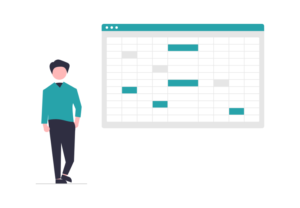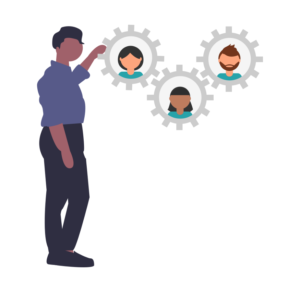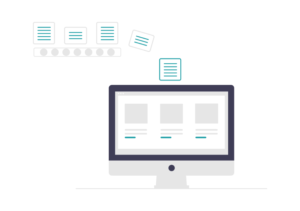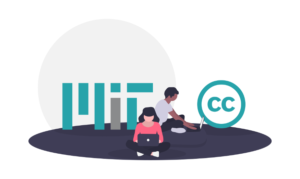The number of data- and tech-for-good initiatives that provide support to mission-driven organizations continues to grow. However, demand still outpaces supply. After nearly a decade of providing pro bono technical assistance to nonprofits, we’ve compiled some tips to help set the stage for fruitful project scoping conversations to increase the likelihood of a successful cross-sector partnership.

Vision: Understanding how your challenges fit the bigger picture
The first step in connecting with a data- and tech-for-good initiative is usually filling out an intimidating, open-ended contact form. Make your case stand out by showing the partner that not only do you have the enthusiasm to engage on a project, but that you’re approaching the opportunity strategically.
We hear “we have interesting data, but we don’t know what to do with it,” a lot. Just because something can be done, doesn’t mean it should be done. Ethical and responsible data and tech use is paramount. A third party might think something would be fascinating to research or build, but that doesn’t mean it is going to be useful for your team in the long run, and it certainly doesn’t mean that it’s appropriate for your community. Your projects should always come from a need your organization and community has identified.
Build up a long wish list of project seedlings, no matter how big or small they might seem.
Small ideas might actually be more complex than you might think, and big ideas might be addressable as individual building blocks that the partner can carve out.
Delve into these ideas
Explore the possibilities and value of your ideas by answering the three main whys:
- Why do you want to answer this question/tackle this challenge?
- Why? What would it help you do?
- Why? What do you hope it would do in the long run?
This helps the partner get a better understanding of the context by surfacing what near- and long-term success looks like for your organization and what the value-add is from the status quo. Further, this longer term vision will begin to uncover both ethical considerations and some of the technical requirements and mathematical/statistical approaches that might be needed.
Buy-In: Gather the stakeholders early
The impact of a data- or tech-driven project often reaches farther than you might initially think. Take some time to identify all the folks that might be impacted so you can work toward a responsible solution that works for everyone. These stakeholders should be brought into conversations early and regularly to inform the whole project lifecycle.
Identify and give a voice to all of your stakeholders.
In smaller organizations, it’s very likely that the same person/group will fill many of these roles.
- Who is facing the challenge?
- Who manages the related data and tech tools?
- Who manages the related programs?
- Who would act on the solution?
- Who makes resourcing decisions?
In proof-of-concept projects, these folks might not yet be fully committed to earmarking resources just yet, and that’s ok. - Who would be affected by the solution?
This is a particularly crucial segment. Effecting meaningful change requires inclusive design and empowering solutions, and that can only occur when marginalized communities have a respected voice at the table. Logistical or privacy concerns may preclude these folks from interacting directly with the partner; in those cases, we rely on you, the organization, to gather and faithfully represent their opinions and interest.
Resources: Get to know your data and tech
With all the creative and strategic thinking out on the table, it’s time to take stock of the available resources. The greatest ideas in the world are only feasible if the right resources exist to tackle them.
What data do you collect?
This can include internal or proprietary data and related open data sources. If you don’t have a data dictionary that makes these questions easy to answer, now’s the time to start making one!
- How do you collect this data?
- On whom and what?
- In what format?
- What geographies does it cover?
- How much do you have? How often do you collect it? Since when?
- Has it changed over time?
- What are your rights regarding sharing this data?
- What’s missing from the data?
What software and tools do you use? Are there any plans to change these in the next five years?
The programs you use are likely interdependent. Try to capture the links in your entire ecosystem to avoid hiccups down the road. A sense of your near-term strategy can help determine the longevity or stability of any solutions, too. Take stock of what packaged software (e.g., Excel, Tableau) and programming languages (e.g., R, python) you use for:
- Data collection
- Data storage
- Data analysis
- Day-to-day operations
 Comfort: Get to know your team’s skill sets and readiness for different solutions
Comfort: Get to know your team’s skill sets and readiness for different solutions
A practical solution for your organization is one that your team is comfortable with, and that they can sustainably manage with their technical skill sets well beyond the partnership. The buzzword world of AI and big data conjures up mythical ideas of complex data and tech-enabled panaceas. Media is awash in alluring descriptions of intricate solutions to help the world innovate and move into the world of tomorrow. That might be great for some organizations, but for many nonprofits, the most effective and manageable solutions are, in fact, the most straightforward and interpretable.
What are the pros and cons of your stakeholders’ (identified earlier) current data/tech tools?
What elements are they comfortable with? What features are missing or lacking?
What other tools, etc. are these stakeholders comfortable using that the organization doesn’t already use?
Any new tools that result from a project should ideally already fit within all the stakeholders’ comfort zone to increase the likelihood of uptake and longevity. Be weary of committing to learning something brand new; the time and effort required would likely be greater than expected.
Scale: Consider who else might benefit from solving these challenges
The social impact space is unfortunately cluttered with organizations reinventing the wheel rather than building off existing solutions. If we want to make significant changes, we need to be more thoughtful about sharing learnings and seeking efficiencies. To that end, consider open sourcing (responsibly!) all or part of your project to benefit others, and take some time to look for any solutions that have already been open sourced.
Who else faces similar challenges?
Could your solution potentially work for them, too? Should they be brought into the project lifecycle or should they be contacted afterward?
Do any similar open source solutions already exist?
Take some time to review related literature. Even if what’s out there doesn’t fit your situation perfectly, you’ll likely uncover some helpful lessons learned and get some inspiration.
What are the cost and benefit trade offs of a fully tailored solution versus a generalizable solution?
Would a generalizable solution lose so much accuracy as to no longer be valuable to your community? If so, maybe there is a smaller portion of the project that can be shared broadly to give others a leg up.
A Strong Partnership Is Iterative
A successful partnership depends first and foremost on your organization’s vision. If there is a viable and valuable project for you and the partner to collaborate on, in all likelihood, you will cycle through the entire Vision to Scale scoping process on a regular basis as you uncover new potentials and limitations along the way. By working together closely with your partner, you can create a diverse team of thought, experience, and expertise to develop a valuable, responsible, feasible, and sustainable solution for your organization that hopefully can benefit others, as well.






